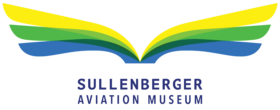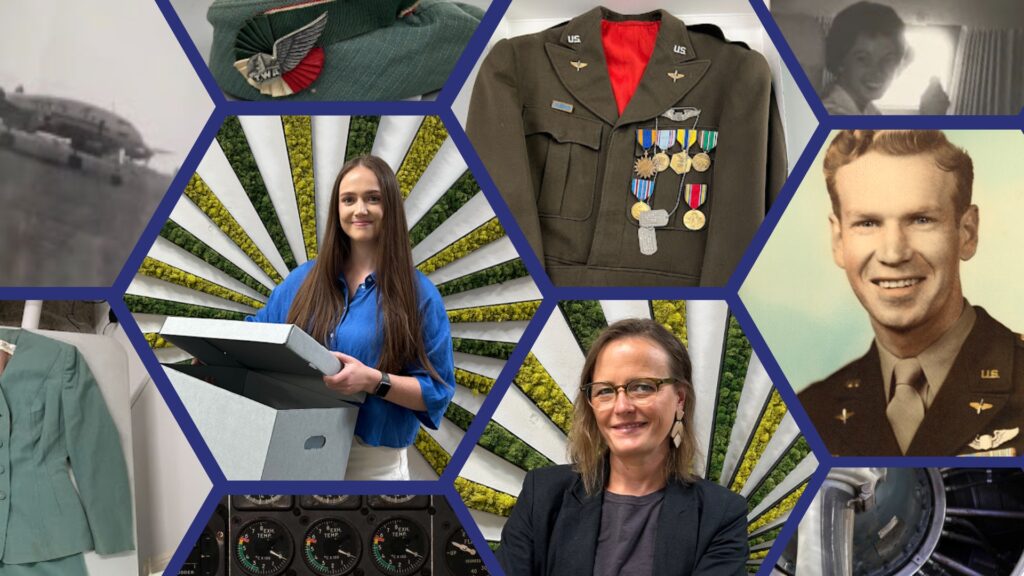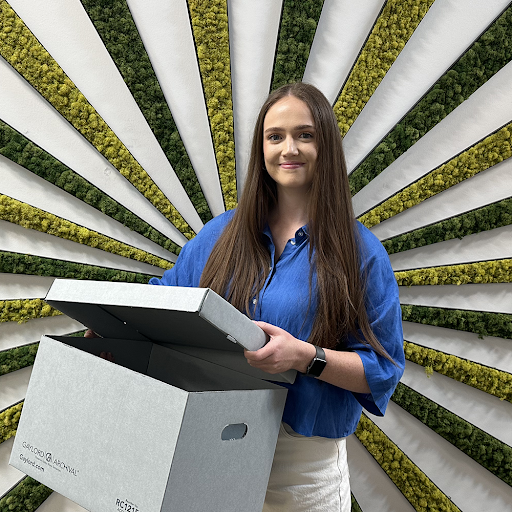
Collections Specialist
When Rachel McManimen started at Sullenberger Aviation Museum, she had a Master’s degree in Public History from (UNC) Charlotte, had done an internship at the State Archives of North Carolina, and was ready to learn. She had worked on the museum staff while she was getting her degree and as a volunteer on and off during the museum closure during 2019-2022.
When she returned to the staff in 2022, she had to do something that not many people have had to do in this region–build a professional archive from the ground up in only 18 months. So, she went to work.
“When Rachel joined the team in 2019, I knew I was working with a rising star in the museum field. When the opportunity to bring her back presented itself I didn’t hesitate,” said Katie Swaringen, Vice President of Collections.
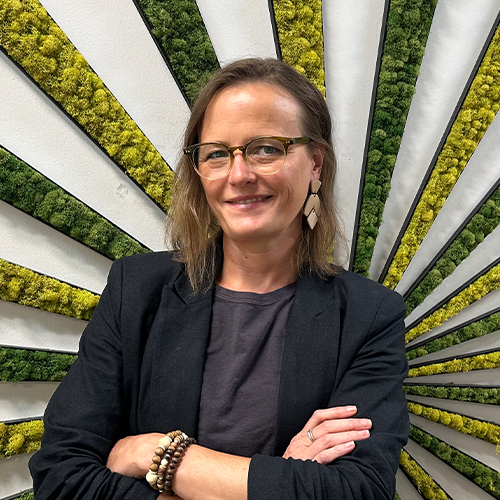
Vice President of Collections
“In an ideal world, you have specialized museum staff for specific roles, but in reality the museum field requires staff to be nimble and well rounded in their skill sets. Sometimes this can be an advantage. For example, our Collections team not only cares for a wide variety of artifacts (aircraft, textiles, photographs, small objects), but also acts as curators for these special stories.”
The small artifact collection began over 30 years ago, originally as an offshoot from the aircraft, as museum volunteers realized these planes came with smaller objects that told their stories too. Volunteers began to field requests from the community looking for a place to preserve aviation stories and the collection began to grow. The Library volunteers accepted a wide variety of artifacts, finding many special items in the process.
By 2012, Swaringen had cultivated a close working relationship with the Smithsonian’s National Air and Space Museum conservation team when they consulted about the preservation of the Miracle on the Hudson aircraft. The museum expanded this relationship when they became a Smithsonian Affiliate in 2013.
“The affiliate program provides professional development, collections best practice resources, and access to Smithonian traveling exhibits and programs. These resources have helped us focus on the future–where we want the collection to be in the near term and what we dream it could be down the road,” said Swaringen
In 2017, the museum reached a critical milestone when the collection officially transitioned from volunteer care over to museum professionals trained to care and record artifacts for perpetuity. It was also at this time the museum adopted the first Board approved Collections Policy, a policy focused on museum best practice and mission based collecting.
“We were able to create our first mission-driven Collections Policy and focus more narrowly on the artifacts that helped us tell the stories that aligned with that mission,” Swaringen said.
Let’s get back to McManimen for a minute. When she joined fellow Collections Specialist Molly Kinyon (who focuses on curating and caring for the aircraft in the collection) in 2022, the growing team had to run to catch up with the new Sullenberger Aviation Museum that was beginning to take flight.
So, she put on her boots and her hard hat and dug in. Where before she had been researching the origins of artifacts, photos, and documents, she has now added fire protection, lighting, and security to her expertise, all while the building is going up around her. She’s helped design the space so that it has areas for storage, curation, research, and processing. She worked with the architects to plan for the appropriate operational controls such as temperature and lighting to minimize the negative impacts on the collection. One of her proudest moments was increasing the fire-rating of the archive walls to meet industry standards.
“I’ve really learned so much from some key mentors and fellow staff members at the Museum,” said McManimen. “It has been a lot of work, but it is so incredible when we get new artifacts – like the Dogwood Room’s first dollar or Pinky’s Eisenhower jacket.”
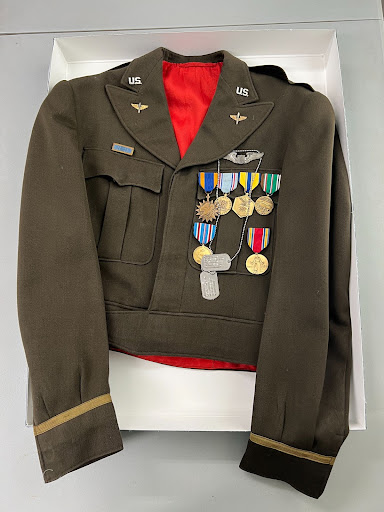
She’s talking now about the Dogwood Room Collection from the CLT Airport café that fed travelers and airport staff for over 50 years and artifacts from Pinky Funderburk’s WWII service, including his Eisenhower flight jacket and letters to his mother during his War service.
“I can’t wait to stand next to Pinky and show him the showcase that tells his very own Carolina story,” said McManimen. “Our team is looking forward to the day next summer that we can open the doors and show how we’ve all worked together to curate aircraft and objects to tell stories that will both engage and inspire visitors.”
And as to those mentors. They connected her to resources to expand her tool kit and shared their experiences which have helped her shape some of her collections practices. Their generosity with their time as she worked to build her practical expertise while helping build the new museum was invaluable.
Thanks to the following collaborators who helped us understand that we don’t have to “drink the ocean” —
- Sydney Carroll, archivist, Charlotte-Mecklenburg Library,
- Ellen Show, Director of Library and Archives, and
- Jennifer Winford, Associate Librarian, Mint Museum.
What happens to an artifact when it is donated to the museum?
By Rachel McManimen, Collections Specialist
Last week we received a large donation from a donor whose mother was a stewardess for TWA in the late 1950s and early 1960s. One of the uniforms will be on display in the Cabinet of Curiosity in the grouping of flight attendant uniforms.
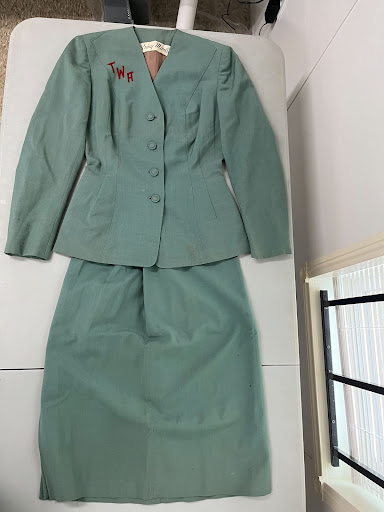
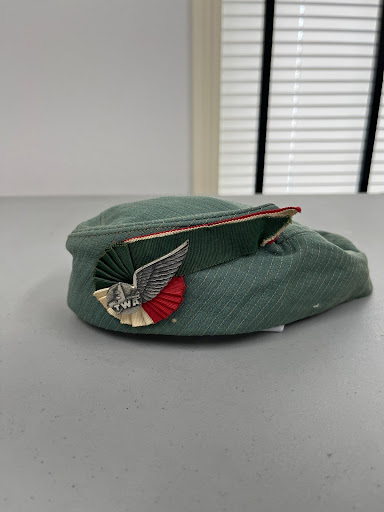
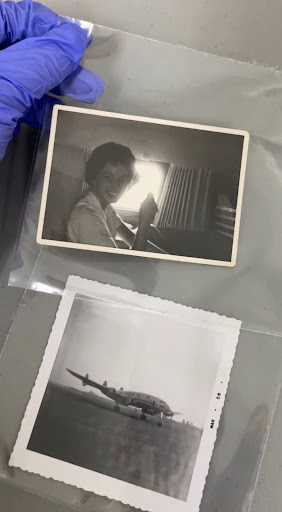
Here’s what happened next…
After receiving the donation and completing appropriate paperwork, Collections Specialist Rachel McManiman accessions the artifact. “Accessioning” is the formal process of accepting something into the Collection. I “accession” items into our collections management software and input information like the contact information of the donor, condition of the item, where the item will be stored in the archive, photos of the item, and any and all information we know about the item, how it was used, who wore it, etc. At this point in time, the item receives an “accession number.”
After accessioning, I place the artifact in an appropriate enclosure for safe storage. I will measure this uniform to ensure I order the appropriate size acid free box. I will also determine what kind of material this uniform is made out of so I know whether to use buffered or unbuffered acid free tissue paper. The textiles will be stored in a large costume box, but the paper artifacts and photographs will be stored in a flip-top document case specially made for flat items.
The image shows photographs placed in polypropylene pockets, which will then be deposited in an acid free folder, and the folder is housed in a document case. The photographs will also be accessioned and have their own individual accession number.
Though the items are in different sized boxes, all boxes with artifacts that pertain to this individual collection will be stored next to each other on the shelving. We do not split up artifacts and store textiles with other textiles and photos with other photos, for example.
The costume box and document case fully close so the items inside the boxes are protected from light and dust. These boxes also have a laminate coating on the outside that makes them resistant to water and fingerprints.
Lastly, these enclosures will be stored on shelving in the archive that will be climate controlled (temperature and relative humidity), 2-hour fire rating protection, and secure – only Collections staff have keys to the Archive.
Click here to see a video of Rachel’s initial preparation of the uniform and associated other artifacts for display.
